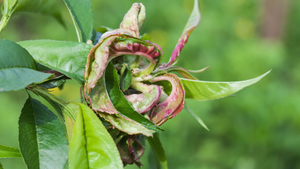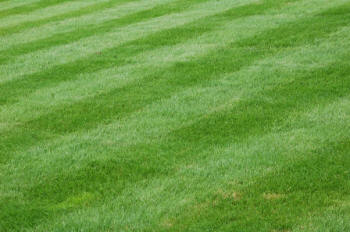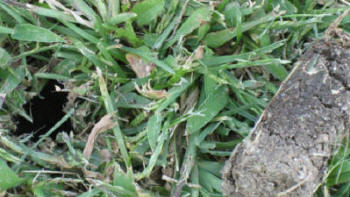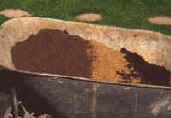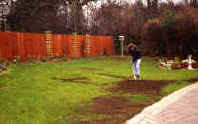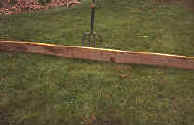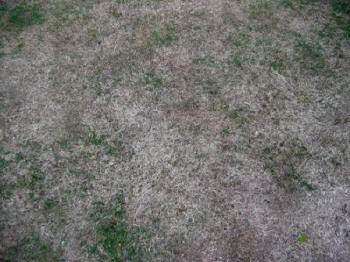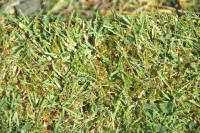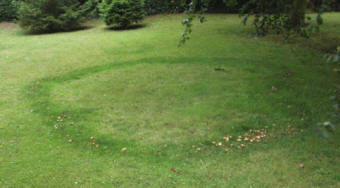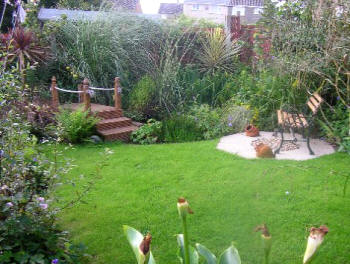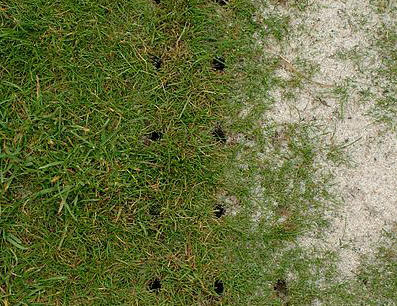Leaf Curl is a fungus, it is highly transferable from leaf to leaf, branch to branch. It gives off tiny dust like spores which attach, attack and feed on leaves. The fungus stops the photosynthesis process which id vital to the trees survival.
At the first signs you must remove the infected leaves (place them in a burn bag or burn them yourself, do not add them to your compost heap or your brown bin, this will only increase the chances of contaminating other trees), this will reduce the spreading, not a cure. Other leaves will also be infected, but to the naked eye you will not know which ones, therefore you must now spray the whole tree with a treatment method.
There are two methods, chemical control of peach leaf curl and / or Organic / Natural control of peach leaf curl.
Chemical Control of Peach Leaf Curl
At the first signs you must remove the infected leaves (place them in a burn bag or burn them yourself, do not add them to your compost heap), this will reduce the spreading. Removing the infected leaves is not a cure. Other leaves will also be infected, but to the naked eye you will not know which ones, therefore you must now spray the whole tree with a treatment method.
The best effective treatment is a mixture of Copper Sulphate and Slaked Lime (Calcium Hydroxide) which is called the Bordeaux mixture. It is commercially used to prevent infestations of downy mildew, powdery mildew, potato blight, peach leaf curl and apple scab in vineyards, fruit-farms and gardens.
It prevents the germination of fungal spores as long as you follow the application guidelines.
This is a simple mix of 1:1:100, one part Copper Sulphate, one part Slaked Lime, one hundred part water. In our terms, 50 ml of Copper Sulphate, 50 ml of Slaked Lime (Calcium Hydroxide), equals 5,000 ml of Water (5 ltrs).
If you purchase the powder or crystal versions of Copper Sulphate or Slaked Lime (Calcium Hydroxide), you must mix into a soluable solutions separately before you mix them together.
Once soluable, mix them together, shake well, and pour into your sprayer, prime your sprayer and spray your tree from top to bottom, every branch, bark, and leaves, to the point of saturation.
You should do this when you first discover an infection but prevention is the key to success, follow | When to Treat Peach Leaf Curl? | listed below
Treatment will take 10 days to take effect.
Chemical Control of Peach Leaf Curl
Step 1:
- Remove the infected leaves with a pair of Secateurs
Place the infected leaves in a burn bag or burn them yourself, do not put them in your brown bin or compost heap
Step 2:
- Add 50 ml of Copper Sulphate to 50 ml of Slaked Lime (Calcium Hydroxide) to 5,000 ml of Water (5 ltrs)
Depending upon the size of the tree will depend upon how much you need to mix.
Mix well and add it to your sprayer
Step 3:
- Prime your sprayer and spray the infected tree from top to bottom, spray each leaf, branch and trunk to the point of saturation
Supplies Required
